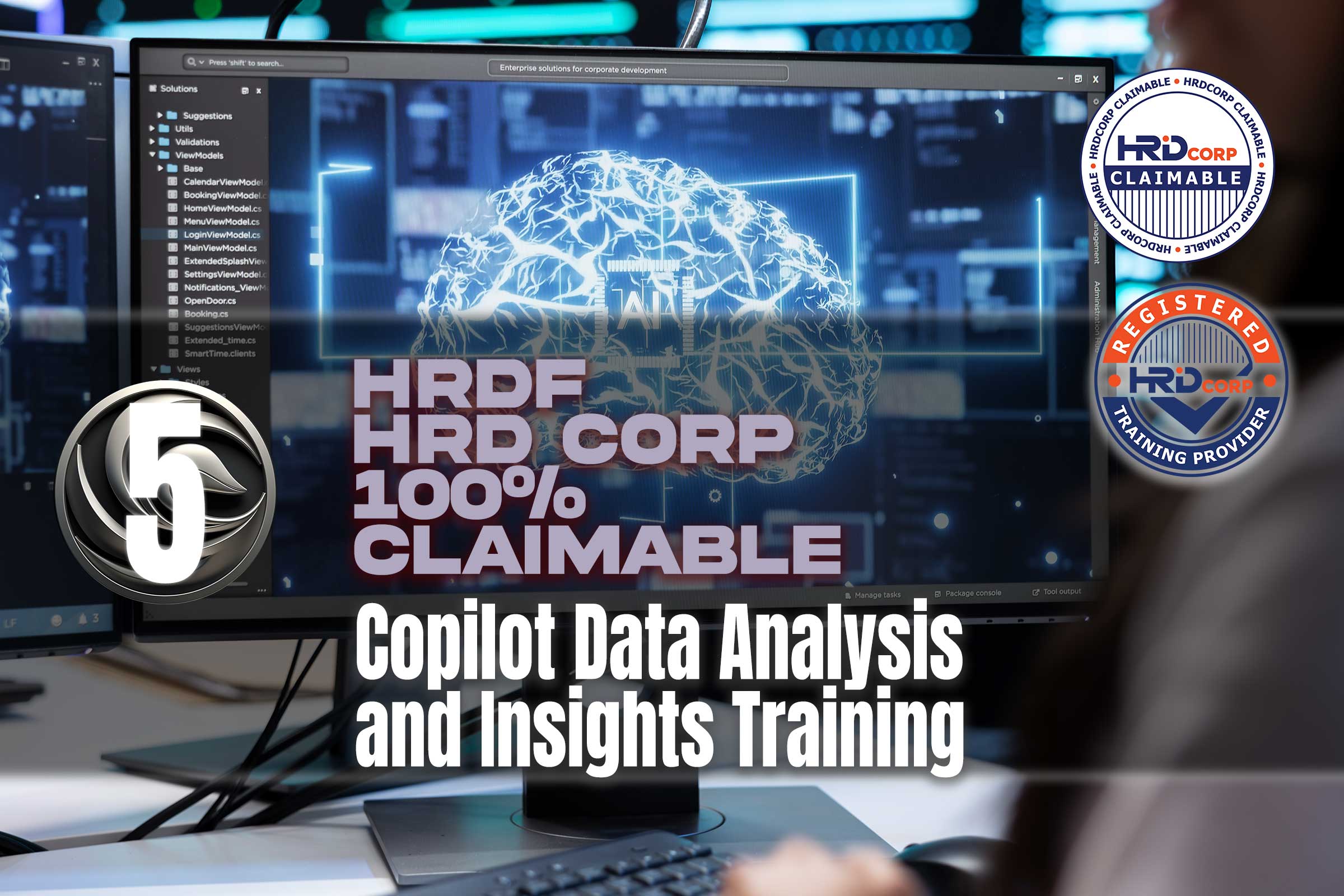Microsoft Excel for Accountants Training
Training Methodology:
The goal of this Excel Accountants – HRDF | HRD Corp Claimable is to teach accountants useful skills for using Excel to manage financial data. This is what the method includes:
- Instructor-led demonstrations: step-by-step instructions on how to use Excel’s accounting-specific features and tools.
- Real-world financial data is used in hands-on tasks so that participants can use accounting functions and techniques.
- There will be group talks and question-and-answer sessions to help people deal with common problems in financial management.
- Case studies show how Excel can be used in real life to make accounting tasks easier.
- Continuous input: Regular tests with feedback to help you get better at using Excel for accounting and be more accurate and efficient.
Microsoft Excel for Accountants Training Course Description
The goal of the Excel for Accountants course is to give accountants the basic Excel skills they need to make their work easier. Advanced formulas, financial functions, and data analysis tools that are necessary for handling accounting tasks are taught in this course. Participants will learn how to effectively manage financial information, create financial reports, and automate jobs that need to be done over and over again.
What You'll Learn
- Financial Functions: To figure out loan payments, interest, and amortization plans, learn how to use Excel’s financial functions.
- Data Management: Sort, filter, and clean financial data as part of organizing and managing big datasets.
- PivotTables: Use PivotTables to summarize and look at financial info.
- Budgeting and Forecasting: For budgeting, forecasting, and variance analysis, make models that change over time.
- Reporting and Visualization: Make visual records for showing and analyzing finances.
Course Outline
Module 1: Financial Functions and Formulas
- You can do financial estimates with key Excel functions like PMT, NPV, IRR, and FV.
- Making loan repayment plans and amortization schedules.
- When doing math and keeping track of money, use the DATE and TIME tools.
Module 2: Data Management and Cleaning for Accountants
- Adding, sorting, and screening big sets of data.
- Tools like Text to Columns and data checking can be used to clean up data.
- Checking for errors in the data to make sure it is correct.
Module 3: Advanced PivotTables for Financial Analysis
Making PivotTables for financial reporting and making them fit your needs.
Financial data is grouped by time periods (monthly, quarterly, and annual).
Using PivotTables and PivotCharts to look at trends and differences.
Module 4: Budgeting, Forecasting, and Variance Analysis
Making budget models and estimates that change over time.
Predicting what will happen with money by using What-If Analysis and Scenario Manager.
Comparing the real numbers to the ones that were planned is called variance analysis.
Module 5: Reporting and Visualization for Accountants
- Using formulas and charts to make automated finance reports.
- Making dashboards to show cash information.
- Using conditional style to draw attention to important financial numbers.
Course Conclusion:
By the end of the Excel Accountants – HRDF | HRD Corp Claimable, students will know how to effectively handle financial data, automate accounting tasks, and create useful financial reports. This course is perfect for accountants and finance professionals who want to get better at Excel and make their job easier.
Duration
Time commitment
Language
Recap video transcript
Difficulty
Plaform
Contact Now : Microsoft Training HRDF | HRD Corp Claimable
How To Apply HRDF | HRD Corp 100% Claimable Grant
Read the whole process to apply HRD Corp Grant
Get the whole idea how much you can claim
Use this scheme to get 100% claimable
How to appeal your grant
How to withdraw your grant
Modify your grant
How to answer the query
















